partner

"I could recognize it with my eyes closed, by the sweet perfume of its maquis": these are the words used by Napoleon to describe Ajaccio, the city of his birth in 1769. Looking out over the clear waters of the Corsican Sea, the city was founded by the Genoese. Ties with the Ligurian–Tuscan area are also at the origins of the Buonaparte family’s arrival on the island, who came there from Sarzana in the sixteenth century.
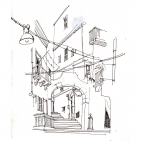
In a Sardinia of dazzling beauty, beloved by tourists for its stunning beaches, wild hinterland and art and culture, there is an island within an island, tiny San Pietro, that was colonized in the eighteenth century by a group of Ligurian sailors coming from the Tunisian island of Tabarka, who preserved the dialect, culture and traditions of the Ligurian Riviera.
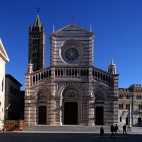
I caratteri tipici della Toscana meridionale sono quelli selvaggi della Maremma, con gli aspri paesaggi percorsi dai butteri.

The development of the Livorno territory was begun in the sixteenth century by the Grand Dukes of Tuscany, but the smallness of the territorial extension dependent on the city nucleus was not exceeded until the beginning of the twentieth century, when the coastal strip up to Piombino came to be included as part of the province, in this way covering the whole portion of Tuscany that was placed by Napoleon under Elisa and Felice Baciocchi, princes of Livorno and Piombino.
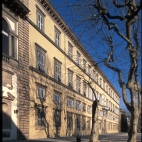
The symbol of the city of Lucca is without question its sixteenth–century wall, entirely conserved, which encircles its perfectly harmonious historical centre. Although many modifications have been made to the urban fabric over the centuries, these changes have been made with such wisdom as to increase rather than diminish the beauty of the whole, as happened during the government of Elisa Bonaparte and her husband Felice Baciocchi, who were named the Princes of Lucca and Piombino in 1805 and who supported major and radical urban transformations of the city while filling their own residences with extraordinary works of art.

The sacred majesty of the profile of the Apuan Alps dominates the landscape of north–west Tuscany and bears the visible signs of an economy tied to the exploitation of marble quarries. In the bold shadow of these mountains, the cities of Carrara and Massa have played out their histories among the blocks of stone, intertwined at the beginning of the nineteenth century with that of Elisa Baciocchi, who became their sovereign.
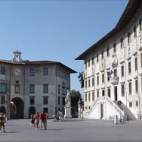
Those who come to Pisa with a traveller’s curiosity will realize that the city is not just the fascinating Leaning Tower but is also rich in equally important historical, artistic and architectural testimonies, not only within the city walls but also in the neighbouring areas.

The small historical centre of Sarzana, clearly recognizable amidst the more recent constructions, opens its treasures to visitors as they walk through its streets: an antiquity of walls and traditions that acts as a resonator of Napoleon’s ascendency, that illustrious exponent of the branch of the Bonaparte family that left Sarzana, centuries before the Emperor’s birth, to settle in Corsica.
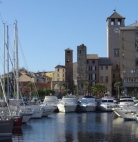
The coat of arms of the Province of Savona includes an image of the sea, an inescapable element of the Ligurian territory. But the Napoleonic history of this strip of land between the snow and the brine unfolded more amongst the gentle hills of the hinterland than the billows of the waves.









